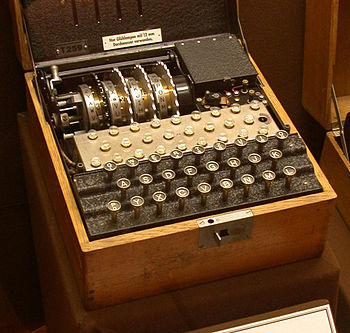MUA: n-to-one relationship
Mon 27 January 2014
Keymaker (Photo credit: S n o R k e l)
key creation
Follow the GPG tutorial. To create entropy (a lot of random data), I was using a program swapping a lot (quite unconfortable) while sharing my favorite GNU/Linux distribution with bittorrent.
Here is the code used:
- create the key
gpg --gen-key
And that's all. You must answer a few questions (for the firsts one, the defaults values are OK).
- publish your key
gpg --keyserver <key_server>--send-keys <your_name>
replace 'your name' with your name or the key ID and use a suitable keyserver (e.g. hkp://keys.gnupg.net). Of course you can use whatever mean you want, but using this one is a common way to publish your key. You can also attach your key to all your emails.
- import new keys
thunderbird/enigmail
[caption id="" align="alignright" width="150"] Not Enigmail machine (Photo credit: Wikipedia)[/caption]
Not Enigmail machine (Photo credit: Wikipedia)[/caption]
The easiest interface. The menu item Edit -> account setting -> OpenPGP Security is quite explicit, yet not easy to find.
mutt
This userguide is ok for a beginning. No need to do all that stuff. you just need to use the menu accessible trhought the p command (all your ~/.gnupg wil be automatically read and imported).
kontact/kmail
The KDE wiki give some hint. The appropriate menu (whose item are explicit) is Tools -> Certificate Manager. From there, you can import, export, etc...
EDIT: A simple tool exist to test your configuration: adele. juste send an encrypted e-mail to adele-en@gnupg.de and if you are doing all right, you will receive an answer that show you your config works. If you are missing something, the answer is indicate why it does not work.
(Non-)Related articles
Category: how to Tagged: Enigmail GNU Privacy Guard KDE Mutt Pretty Good Privacy Public-key cryptography how to tools






